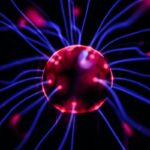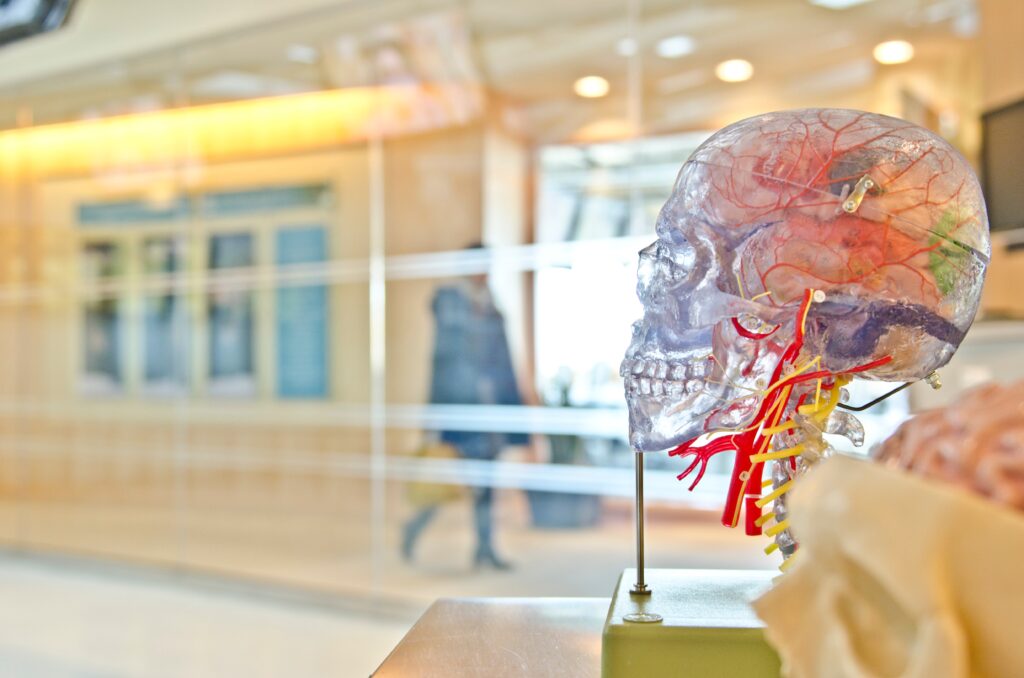
Schizophrenia is a chronic mental disorder that affects millions of people around the world. The World Health Organisation (WHO) describes it as being characterised by distortions in thinking, perception, emotions, and language. Patients suffering from schizophrenia typically experience hallucinations (perceiving things that don’t really exist) and delusions (believing in things that are not true). But there are further, secondary symptoms associated with the disease. People with schizophrenia often suffer from cognitive deficits in areas such as learning, cognitive control, and social cognition (Gold & Harvey, 1993), which strongly impact their quality of life (Heinrichs, 2005).
Drug treatments for schizophrenia disorders focus on treating psychosis (Hill et al., 2010), but do not address any cognitive problems, and can even make those worse (Ballesteros et al., 2018). This is one reason why it is key to explore additional treatment approaches. One of those could be Transcranial Direct Current Stimulation (tDCS), a non-invasive and painless method that uses electrodes to stimulate or inhibit areas of the brain through electrical currents. What is more, the equipment needed for tDCS is relatively cheap and could therefore theoretically become widely accessible.
Research has shown that in patients with schizophrenia, the way the brain becomes excited or inhibited is not the same as in healthy populations (Uhlhaas and Singer, 2012). This observation is often called “excitation/inhibition imbalance”. Researchers hope that by manipulating the excitability of brain cells in schizophrenia patients using electric stimulation, they can help treat their cognitive deficits.
A recent paper by Ralitsa Kostova and colleagues from the University of Glasgow and the Charite university hospital in Berlin summarises the current state of research on the use of brain stimulation to improve cognitive deficits in schizophrenia patients. Their review will be the focus of this blog.

Electrically stimulating neurons could help to treat and improve cognitive deficits in schizophrenia.
Methods
The researchers searched online databases for publications on cognitive deficits in patients with schizophrenia and then selected the most relevant articles for review. Their initial search identified 659 articles, and after several rounds of systematically excluding less relevant papers, they were left with 32 articles. They then performed statistical tests to see whether there were general trends amongst the studies.
All the studies reviewed used electrodes positioned on the scalp of patients to stimulate different brain areas. However, the studies differed in the way they positioned the electrodes. Most studies (n=20) used excitatory stimulation, and targeted frontal regions of the brain. The intensity of the electric currents varied between 1 and 2 mA, and the time of stimulation varied between 10 and 30 minutes, with an average of 19.86 minutes.
Around half of the studies (n=15) used several sessions of electrical stimulation, while the other half used only one session. Most studies (n=29) compared the performance in cognitive tests before and after stimulation, while 7 studies also tested cognitive performance during the electrical stimulation.
Different cognitive measures were assessed across studies using standard methods from the field of psychology. Most were behavioural tests where participants have to carry out a task and their response time or the accuracy are measured. Some studies used question batteries (e.g. August et al., 2012), to asses social cognitive functioning of the participants. There was a great variety amongst the measures used to asses cognitive functioning in the different studies.

Published studies on schizophrenia and brain stimulation are very diverse and use a large variety of different methods.
Results
The majority (n=21) of studies overall (N=32) reported significant effects on a behavioural level. However, since experimental designs and behavioural measures varied, the results are difficult to summarise.
Of the studies reviewed, a substantial number tested for memory effects (n=18), and more than half of them (n=12) found statistically significant effects on memory. Studies on different types of learning generated contradictory results, some reporting improvements, some reporting no changes. Cognitive control and attention was improved in 5 out of 8 studies. Measures of social cognition improved in 2 out of 3 studies.
In some studies, brain imaging methods (EEG or fMRI) were used to see if the electric stimulation caused any observable differences in the brain responses of the patients. Of the 11 studies that reported neuroimaging measures, 7 found significant effects. The studies using EEG and fMRI had additional informative value because they made it possible to measure effects of the treatment with more precision.

The results seem to show a general trend that electric stimulation has effects on cognition, and can be used as a form of additional treatment.
Conclusions
The results seem to show a general trend that electric stimulation has effects on cognition, and can be used as a form of additional treatment. Due to the variability of results across studies, it is not possible to identify any concrete relationships that are true across the field as a whole. Electrical stimulation appears to be able to influence cognitive performance and we can hope that with more research, it will be possible to directly target different deficits. Future studies should work towards a generalised framework, and, if possible, use neuroimaging or electrophysiology in addition to behavioural measures.

Future studies should work towards a generalised framework, and use neuroimaging or electrophysiology in addition to behavioural measures.
Strengths and limitations
The review demonstrates the potential of tDCS for treating cognitive deficits in schizophrenia. Unfortunately, the literature is currently too varied to come to any clear conclusions, and comparability between studies was very low. It is difficult to make claims that go beyond those made by individual studies. Nevertheless, the review helps to set new targets for future research.
Based on the studies reviewed, we cannot say that if we stimulate a specific area of the brain at a specific strength for a specific length of time, it will have a concrete effect. In order to be sure of the effects of the tDCS, the methods used by different researchers would have to be standardised.
We have reasons to believe that the stage of the illness (Anticevic et al., 2015; Grent-‘t-Jong et al., 2018) as well as the medication that patients are taking, their individual anatomical differences, and other factors, influence the way that the stimulation affects them. These factors need to be controlled in future studies of this kind. Furthermore, whether or not the effects observed have long-lasting consequences is a crucial piece of information that has so far received little attention. Since the studies were not longitudinal, we don’t know whether the effects observed were long-lasting or only temporary.

It is unknown whether any of the observed effects are long lasting, as the studies included in the review were not longitudinal. Researchers in this field should endeavour to conduct longitudinal studies, following participants up over time.
Implications for practice
The review suggests that future research should focus on understanding the role of the neuronal excitation/inhibition imbalance in schizophrenia. It argues that this imbalance could be the cause of some of the symptoms of the disorder as well as of some cognitive deficits. Excitation/inhibition dynamics can be directly targeted by tDCS. This approach seems promising, but it needs to be done systematically and with the goal of understanding its mechanisms.
Different treatments will work for different people. Patients with schizophrenia diagnoses are very heterogeneous, and we don’t have a good understanding of the exact mechanisms that are disrupted in the brain of schizophrenia patients. Both these things make it hard to develop treatments. We need to know more about the exact problems of excitatory/inhibitory signalling in schizophrenia, and we need means to profile each patient’s specific disfunction with more accuracy. This way we can try to develop well-targeted treatments.
Another problem that needs to be addressed in the future is that of how long-lasting the benefits of the treatment could be. The studies under review found improvements in the patients after treatment, but they did not follow up their patients over the long-term, so we don’t know at all whether the treatment has any long-lasting effects or not.

If we knew more about the exact excitatory/inhibitory signalling in schizophrenia, we would be able to develop more targeted treatments.
Statement of interests
No conflict of interest.
Links
Primary paper
Other references
August, S. M., Kiwanuka, J. N., McMahon, R. P., & Gold, J. M. (2012). The MATRICS Consensus Cognitive Battery (MCCB): clinical and cognitive correlates. Schizophrenia research, 134(1), 76-82.
Ballesteros, A., Sánchez-Torres, A. M., López-Ilundain, J. M., Cabrera, B., Lobo, A., González-Pinto, A. M., … & Bobes, J. (2018). Is cognitive impairment associated with antipsychotic dose and anticholinergic equivalent loads in first-episode psychosis?. Psychological medicine, 48(13), 2247-2256.
Gold, J. M., & Harvey, P. D. (1993). Cognitive deficits in schizophrenia. Psychiatric Clinics, 16(2), 295-312.
Heinrichs, R. W. (2005). The primacy of cognition in schizophrenia. American Psychologist, 60(3), 229.
Hill, S. K., Bishop, J. R., Palumbo, D., & Sweeney, J. A. (2010). Effect of second-generation antipsychotics on cognition: current issues and future challenges. Expert review of neurotherapeutics, 10(1), 43-57.
Ironside, M., Browning, M., Ansari, T. L., Harvey, C. J., Sekyi-Djan, M. N., Bishop, S. J., … & O’shea, J. (2019). Effect of prefrontal cortex stimulation on regulation of amygdala response to threat in individuals with trait anxiety: a randomized clinical trial. JAMA psychiatry, 76(1), 71-78.
Uhlhaas, P. J., & Singer, W. (2012). Neuronal dynamics and neuropsychiatric disorders: toward a translational paradigm for dysfunctional large-scale networks. Neuron, 75(6), 963-980.
Photo credits
Photo by jesse orrico on Unsplash
